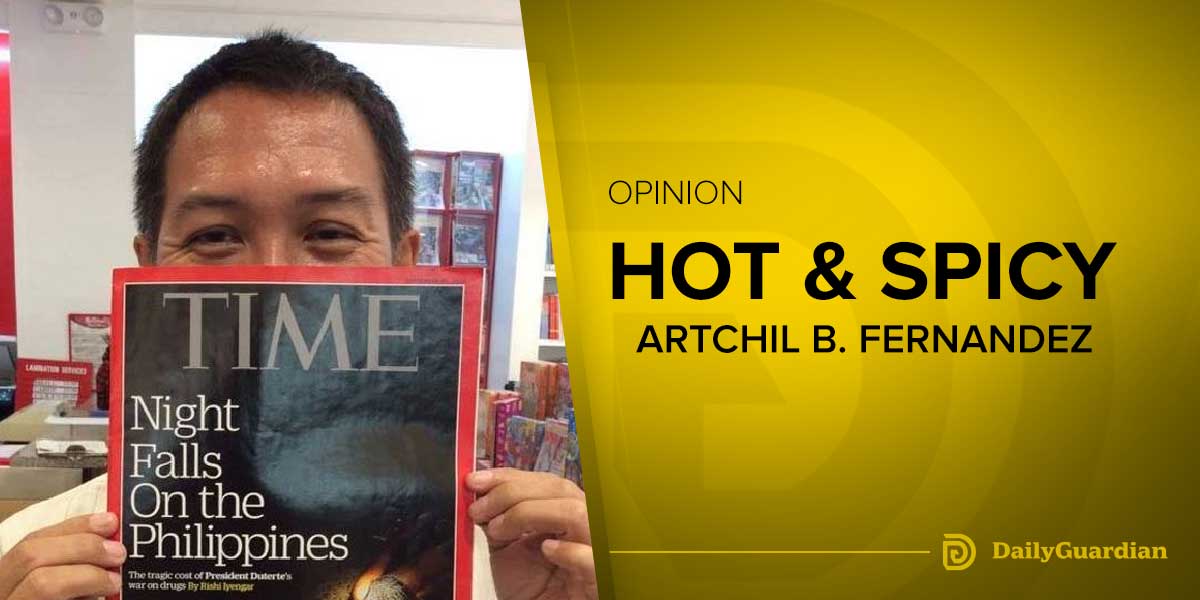 By Alex P. Vidal
By Alex P. Vidal
“I object to violence because when it appears to do good, the good is only temporary; the evil it does is permanent.”—Mahatma Gandhi
DID Facebook or FB, a very popular social networking service and website, sleep on its job?
The following are supposed to be “few of the things that aren’t allowed on Facebook” according to its Community Standards:
- Nudity or other sexually suggestive content.
- Hate speech, credible threats or direct attacks on an individual or group.
- Content that contains self-harm or excessive violence.
- Fake or impostor profiles.
- Spam.
The shooting to death of a 52-year-old mother and her 25-year-old son by a Paranaque cop in Tarlac on December 21 was captured by a video and was uploaded on Facebook hours after the incident.
The showing of a grisly scene, where an actual shooting occurred, was definitely excessive violence; yet, Facebook didn’t flag it down even if it went viral and was seen repeatedly all over the world.
The social media platform sadly is tailor-made for such horrific and very disturbing scenes, thus there has been a strong demand for social media giants like Facebook, Twitter, Instagram, and Youtube to strictly regulate these videos because they always pop out from time to time when we least expect them.
-o0o-
Meanwhile, footage in the TV news networks used the video taken by a female relative of the victims but didn’t play the actual killings in their report.
It’s because the TV networks that aired the macabre segment in the primetime news were aware of the Code of Ethics in broadcast journalism.
They would never show the graphic detail of the actual violence especially that there were minors involved in the crime (both the cop’s daughter and the woman victim’s grandchildren were minors and could suffer permanent emotional and psychological impairment).
The debate over media violence is still nowhere near coming to an end. According to the Medic Ethics in the Morning, some individuals strongly support the media’s right to the freedom of speech, and therefore their right to controversial material.
Others think there should be some sort of limitation on the content for the sake of younger generations and its overall effect on society.
It is impossible to avoid violence in the media no matter what medium you are using, and it will be interesting to see if the future leads to an increase in coverage of violent material or an increase in censorship.
-o0o-
The New York Times reported in 2013 that in 200 studies there was a moderate, positive relationship between watching television violence and physical aggression against another person.
The article goes on to say, “The weight of the studies supports the position that exposure to media violence leads to aggression, desensitization toward violence and lack of sympathy for victims of violence, particularly in children.”
As of this writing, the controversial video wasn’t yet removed in the timelines of many Facebook users who “shared” it.
“Our Community Standards apply to everyone, all around the world, and to all types of content,” Facebook’s Community Standard stated.
“They’re designed to be comprehensive – for example, content that might not be considered hateful may still be removed for violating a different policy.”
It added: “We recognize that words mean different things or affect people differently depending on their local community, language, or background.”
“We work hard to account for these nuances while also applying our policies consistently and fairly to people and their expression,” FB’s Community Standards explained further.”
“Our enforcement of these standards relies on information available to us. In some cases, this means that we may not detect content and behavior that violates these standards, and in others, enforcement may be limited to circumstances where we have been provided with additional information and context.”
Facebook, please be guided accordingly.
(The author, who is now based in New York City, used to be the editor of two local dailies in Iloilo)




















